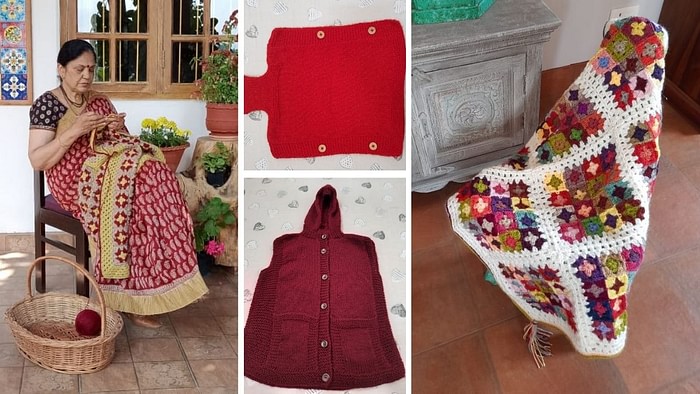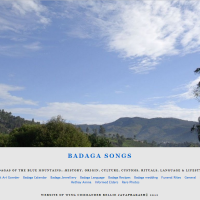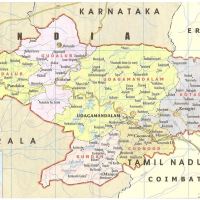Dr. Rajkumar Krishnan (Naihatti), Australia
My heartfelt appreciation for Prof. Hockings and Wg.Cdr.JP for starting this critical discussion on the origin of Badagas.
It is very sad that despite advancement in technology in the last 15-20 years (from world wide web to genetic testing and archaeological technology), we remain where we started nearly 60 years ago trying to find the answer to the question; are badagas indigenous or not to the Nilgiris?
It is time for some serious research from multiple sources like linguistic, gene testing, archeological, historical etc rather than rely on books or papers written without any evidence (from self proclaimed experts writing their own views). I am not sure where funding for this kind of research can be found even if we did manage to find individuals interested in this kind of research.
There are other interesting things that need looking into like; what are the histories for Todas, Kotas andKurumas (as Wg.Cdr. JP has asked)? are their documented histories proven by research or from some self proclaimed experts’ views? How valid is cross reference, collateral history and inference from these works when applied to Badaga origins? Why does Badaga language contain some Telugu words (like gudi – temple, netturu – blood)? How and where is the Telugu connection and what is it’s significance if any? Are Badaga rites and rituals found elsewhere (in Karnataka or Andhra) or are they unique? If unique then how do you account for a community (only few thousands in number, few hundred years ago, if migration theory is to be accepted) which spoke a dialect without written language, manage to develop its rites and rituals with deep meaning and significance (like ‘Karu harasodu’). The absence of dowry system, acceptance of widow remarriage, mutually acceptable divorce and remarriage are all advanced hallmarks of an Indian community not found in Karnataka or elsewhere. How did a group of migrants (if migration happened) decide to have better ethics and way of life (usually immigrants carry their customs & traditions from their homeland)?
Dr.Rajkumar adds :Thanks for publishing my comments . With ref to Telugu/Kannada words. Interestingly, gudi and netturu are also halaya Kannada words and are rarely used in modern Kannada. Kothi in Telugu is monkey albeit pr as kothionounced
Badagas have their own ‘Hethai’ goddess and festivals and I believe were more nature worshippers (pagans), but in last 40-50 years many Hindu gods have made it into the hatti temples (including some Christianity )? They are now living worldwide and is it in the genes of the Badagas to constantly evolve and change reflecting an immigrant past?
Medically, there is huge incidence of sick sickle disease and other associated haemoglobinopathies amongst Badagas. The flip side to these medical disorders is that it genetically confers resistance against malaria. Now why do the Badagas living in the Nilgiris, where there is no threat of any malaria needs these protective genes? These disorders are primarily found in the Mediterranean and some Indian populations. Does this prove migration theory ? if so when was the migration? or is this part of the diverse Indian gene pool with all its idiosyncrasies and patterns?
Badagas are making significant strides economically as well as educationally in the last 30-40 years. I hope in near future we will all reflect, introspect and realise the need to find the truth about our origin.
I have high regards and respect for Prof. Hockings and his work on Badagas. He himself has stated that he has interviewed about 800 Badagas for his research. I am sure he will also accept that this form of interview and research is not critical scientific evidence. People during these interviews will simply repeat what their forefathers and others have told them. There is certainly no intent to falsify or gain anything but neither is this a confirmation of truth . I can understand that given the lack of any scientific facilities for research, this is the best he can do and I am sure that he has done it in good faith.
There is lot of speculation and assumptions from both indigenous Badaga and non indigenous writers and researchers on Badaga origins.We should not forget the fact that many documented articles and books from the past are mainly written from what these authors have been told and/or what they have inferred from interviews (again done in good faith). It is important that we keep asking more questions until the truth is found.
About Dr.Rajkumar :
“The Daily Examiner” 14th Mar 2014
GP happy with move to the Clarence

A SENSE of adventure and a better quality of life brought Dr Krishnan Rajkumar to Australia but he had no idea just how easy life in the Valley could be.
“We wanted a change. I wanted to travel with my wife and kids,” he said.
“We thought we would try Australia. We always wanted to visit Down Under.”
Better known as Dr Raj, the newest addition to the Queen Street Clinic said the biggest surprise about moving to the Clarence Valley was that he could find everything he needed in the area.
“It’s all been very lovely. We are starting so see a few places – Maclean and Lawrence are very beautiful places,” he said.
“The children have all their extracurricular activities like dancing, the schools are good, shopping – we have not felt the need that we have to leave every weekend.
“Indian spice shopping-wise, it’s just down the road to Woolgoolga.”
Dr Raj said he was originally from Ooty in the hills of India but studied medicine in Chennai, with postgraduate studies in basic surgery and ear, nose and throat.
He worked in England from 1997 until moving to Australia at the beginning of the year with his wife and two daughters, who are in Years 5 and 9.
Dr Raj said he liked the variety of work involved in general practice.
“You don’t know who is going to walk in with what,” he said.
He said talking to people was the best thing about being a doctor. “That’s another thing with general practice,” he said. “It’s more like a holistic approach. You get to know the whole person.”
Dr Raj has taken on the patients of Dr Bruce Wakefield and said he looked forward to meeting and getting to know all of them.











 Mookuthi
Mookuthi  Chinna
Chinna 






 ==
==














































